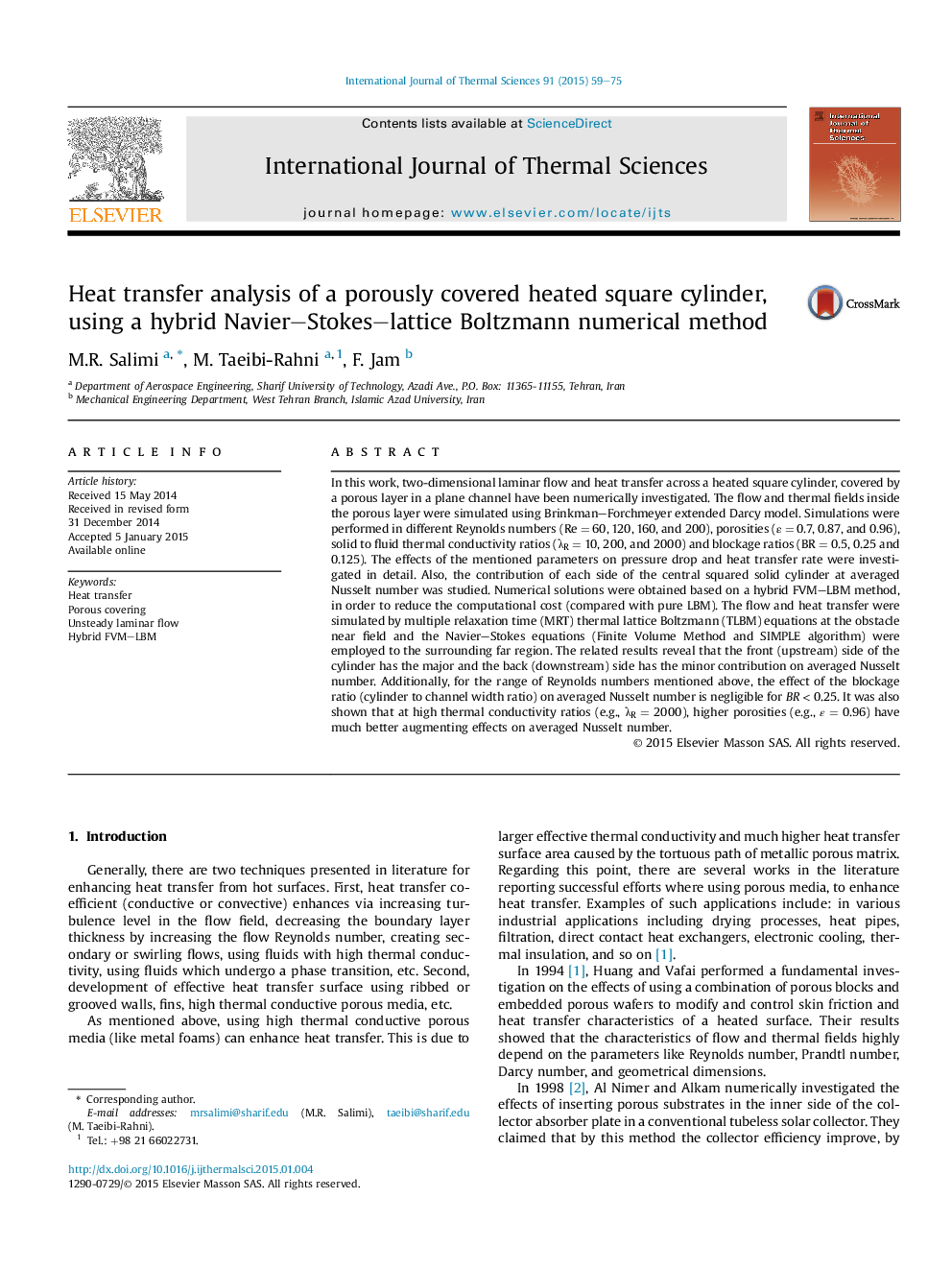| کد مقاله | کد نشریه | سال انتشار | مقاله انگلیسی | نسخه تمام متن |
|---|---|---|---|---|
| 7060961 | 1458731 | 2015 | 17 صفحه PDF | دانلود رایگان |
عنوان انگلیسی مقاله ISI
Heat transfer analysis of a porously covered heated square cylinder, using a hybrid Navier-Stokes-lattice Boltzmann numerical method
ترجمه فارسی عنوان
تجزیه و تحلیل حرارتی یک سیلندر مربعی گرم متخلخل تحت پوشش با استفاده از یک روش عددی بولتزمن هیبرید ناییر استوکس-شبکه
دانلود مقاله + سفارش ترجمه
دانلود مقاله ISI انگلیسی
رایگان برای ایرانیان
کلمات کلیدی
موضوعات مرتبط
مهندسی و علوم پایه
مهندسی شیمی
جریان سیال و فرایندهای انتقال
چکیده انگلیسی
In this work, two-dimensional laminar flow and heat transfer across a heated square cylinder, covered by a porous layer in a plane channel have been numerically investigated. The flow and thermal fields inside the porous layer were simulated using Brinkman-Forchmeyer extended Darcy model. Simulations were performed in different Reynolds numbers (Re = 60, 120, 160, and 200), porosities (ε = 0.7, 0.87, and 0.96), solid to fluid thermal conductivity ratios (λR = 10, 200, and 2000) and blockage ratios (BR = 0.5, 0.25 and 0.125). The effects of the mentioned parameters on pressure drop and heat transfer rate were investigated in detail. Also, the contribution of each side of the central squared solid cylinder at averaged Nusselt number was studied. Numerical solutions were obtained based on a hybrid FVM-LBM method, in order to reduce the computational cost (compared with pure LBM). The flow and heat transfer were simulated by multiple relaxation time (MRT) thermal lattice Boltzmann (TLBM) equations at the obstacle near field and the Navier-Stokes equations (Finite Volume Method and SIMPLE algorithm) were employed to the surrounding far region. The related results reveal that the front (upstream) side of the cylinder has the major and the back (downstream) side has the minor contribution on averaged Nusselt number. Additionally, for the range of Reynolds numbers mentioned above, the effect of the blockage ratio (cylinder to channel width ratio) on averaged Nusselt number is negligible for BR < 0.25. It was also shown that at high thermal conductivity ratios (e.g., λR = 2000), higher porosities (e.g., ε = 0.96) have much better augmenting effects on averaged Nusselt number.
ناشر
Database: Elsevier - ScienceDirect (ساینس دایرکت)
Journal: International Journal of Thermal Sciences - Volume 91, May 2015, Pages 59-75
Journal: International Journal of Thermal Sciences - Volume 91, May 2015, Pages 59-75
نویسندگان
M.R. Salimi, M. Taeibi-Rahni, F. Jam,
